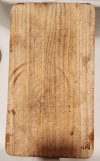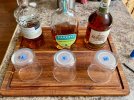There is nothing about end grain that makes it different from edge grain other than high Maintenace, and aesthetics. Folks need to stop mindlessly believing anything marketers claim.
Walnut and maple are fine, edge or end grain makes zero difference to anything other than looks and Maintenace profile. Some think walnut looks better, and it does look nice, but from a performance standpoint, maple is the superior wood for this application and end grain or edge grain maple boards are both very nice and have a good balance of properties. I suppose not everyone is interested to try everything but I would say don't believe a word anyone tells you online. Spend your money and see for yourself. I've tried it all and I know what I like and what works for me. Edge grain maple is the "standard" for a lot of people.
As long as you're not using hard plastic or shitty PE, you're fine. Even a high end PE board is okay, but will absolutely dull knives faster. Even a cheap and much harder and less forgiving wood like Acadia, which when you cut on it feels nothing like the soft and forgiving maple and walnut boards, is just fine as long as you know what you're getting. Most folks who know their stuff generally don't suggest or prefer Acadia but I've done extensive testing on all of these things and while it is harder and does knives faster than maple, it's just fine too. Holds up well, but seems prone to cracking over time more so than some other woods. idk why I'm spending so much time on something I don't generally recommend. Anyway, Teak is a nice middle ground also for many people. These things hold up much better than a lot of other wood and they are by far one of the lowest Maintenace options in terms of real wood. If you actually measure it, they do dull knives slightly faster than say maple, which is kind of the gold standard for a lot of that stuff, it's still very good, and overall very good. This is one I would suggest to try.
ofc there's also those Japanese rubber boards, which are expensive and you should know what you're getting into. The wood like Asahi is probably most folks best bet from that bunch, very low Maintenace and lasts literally forever. Not cheap tho. I'd avoid anything rubber that isn't Japanese, I tested a few and they dulled knives faster than anything else by far.




